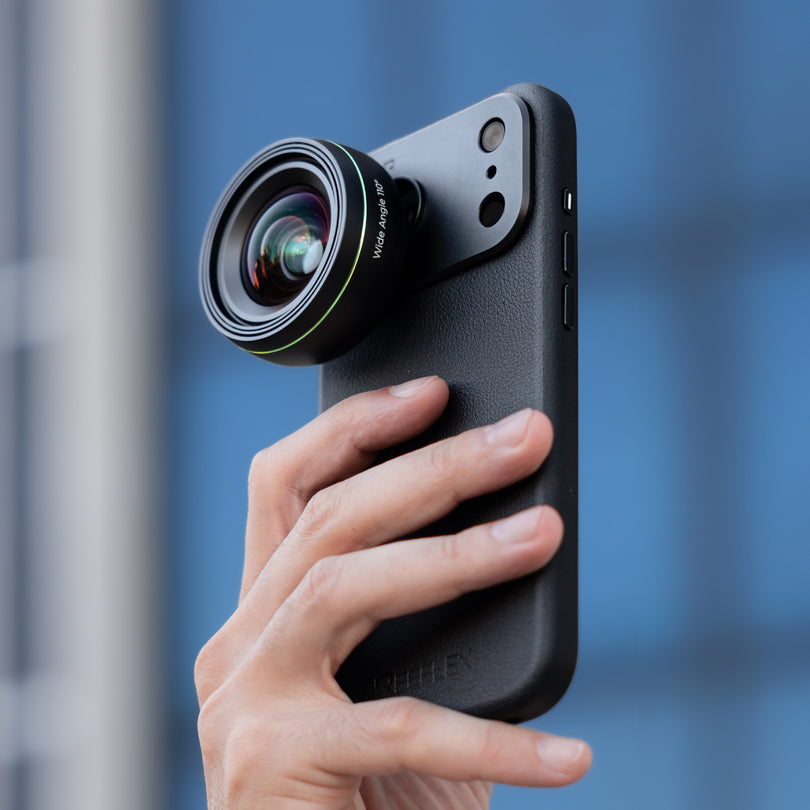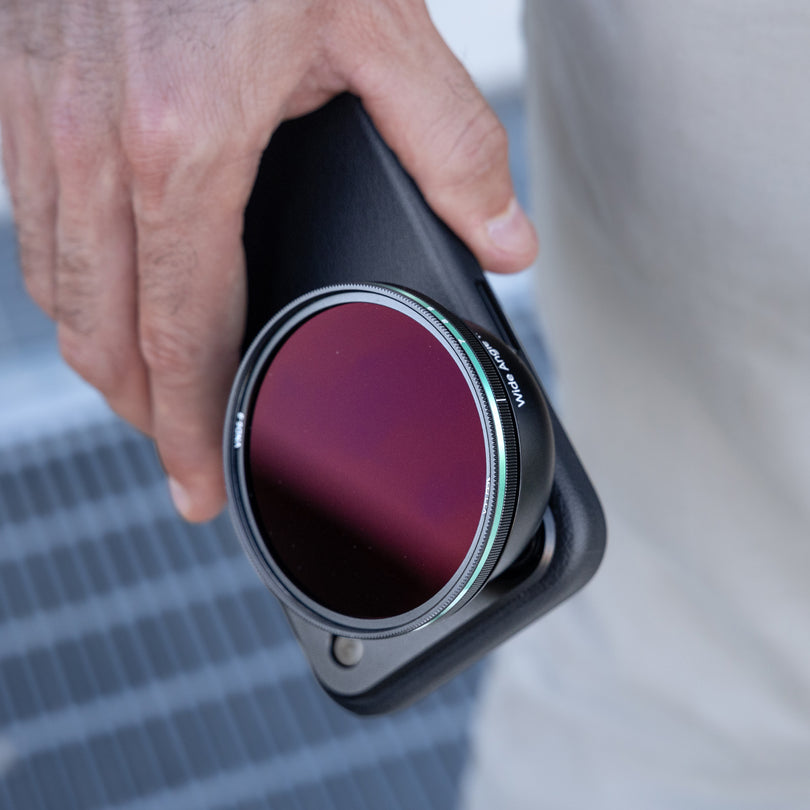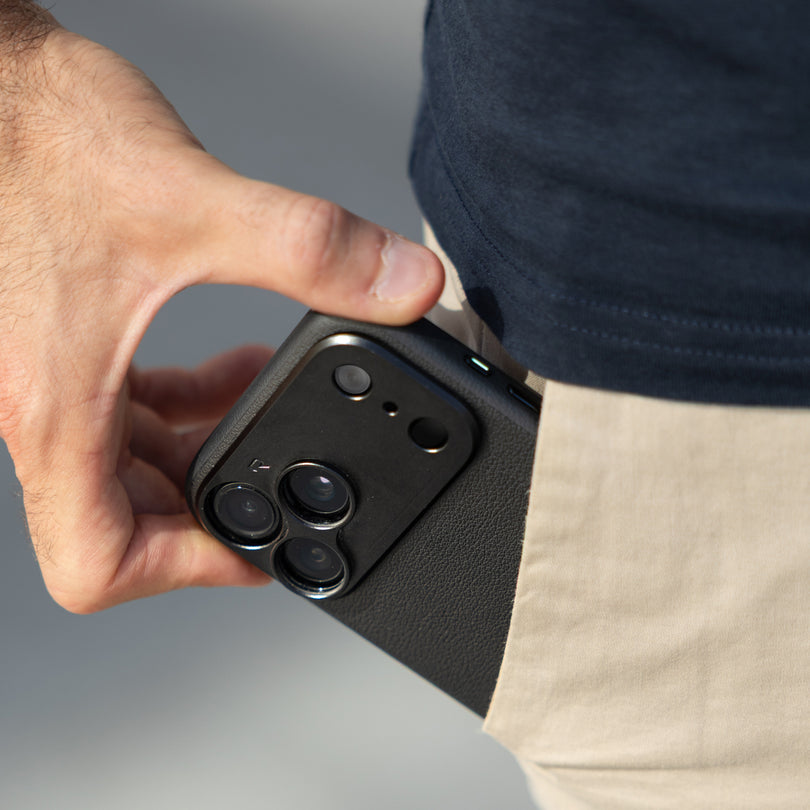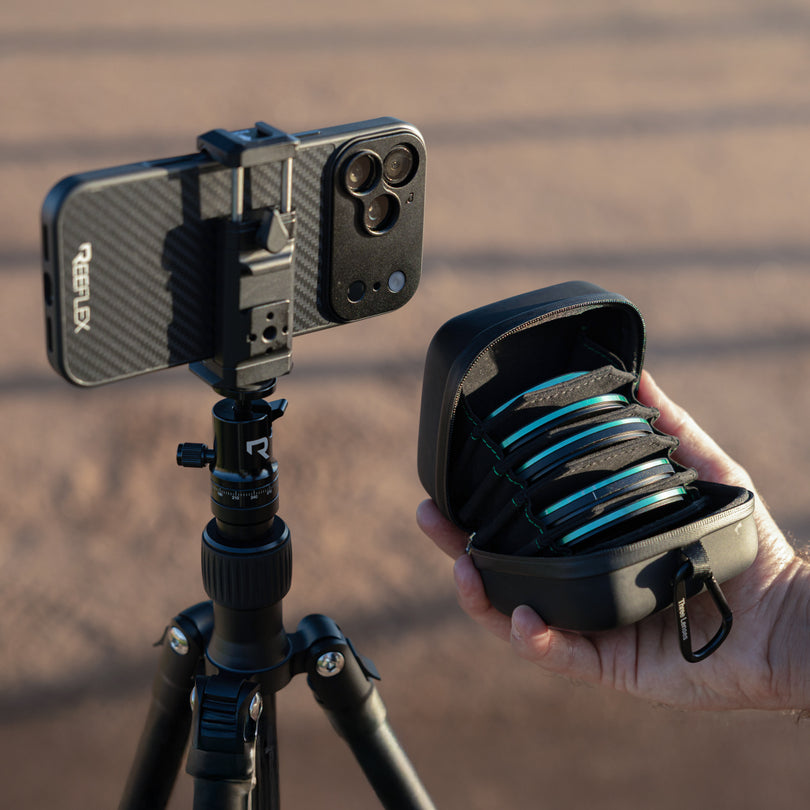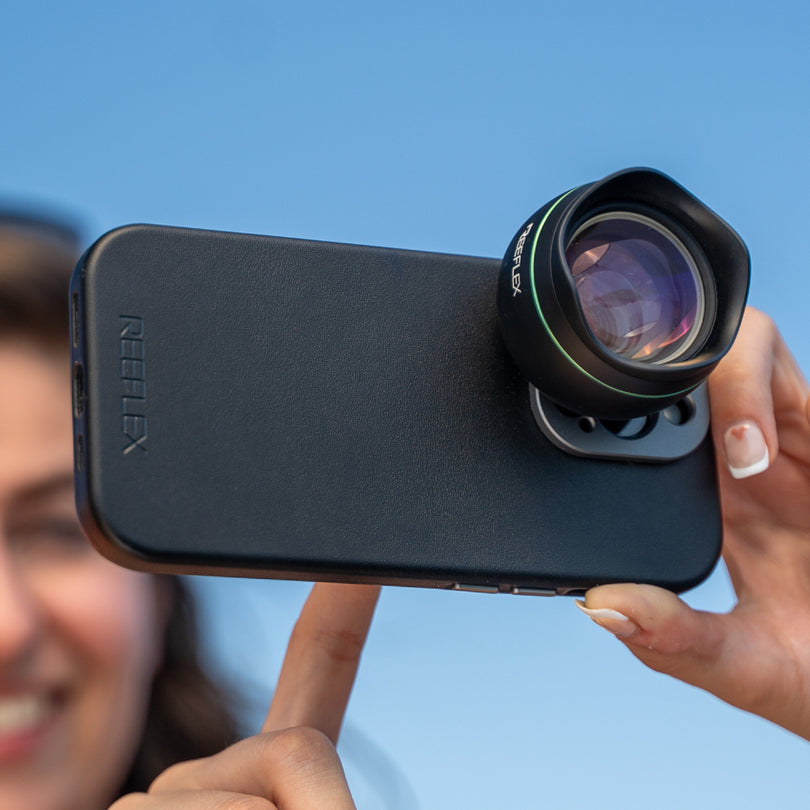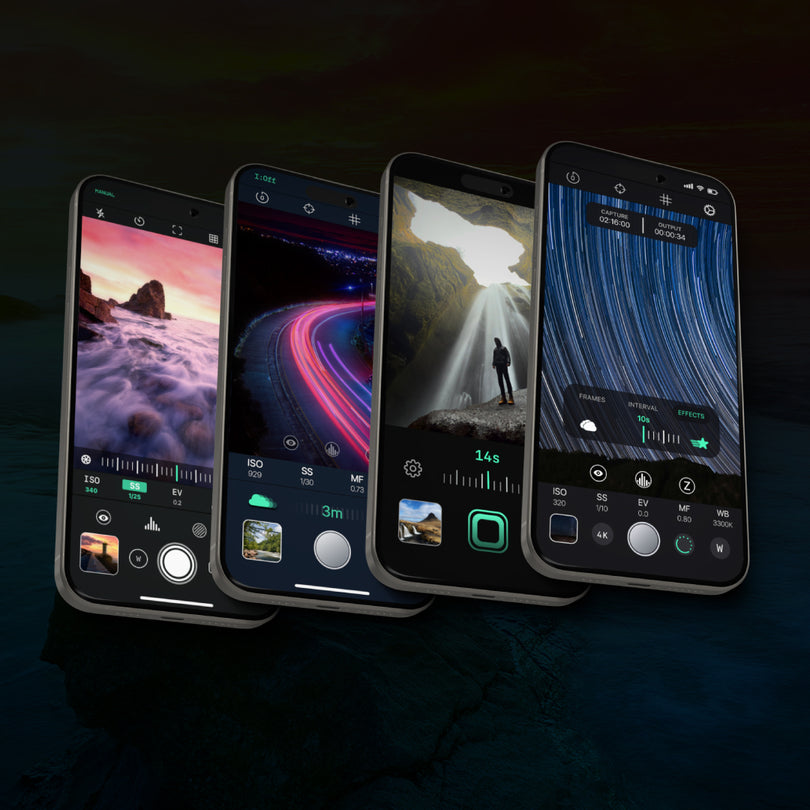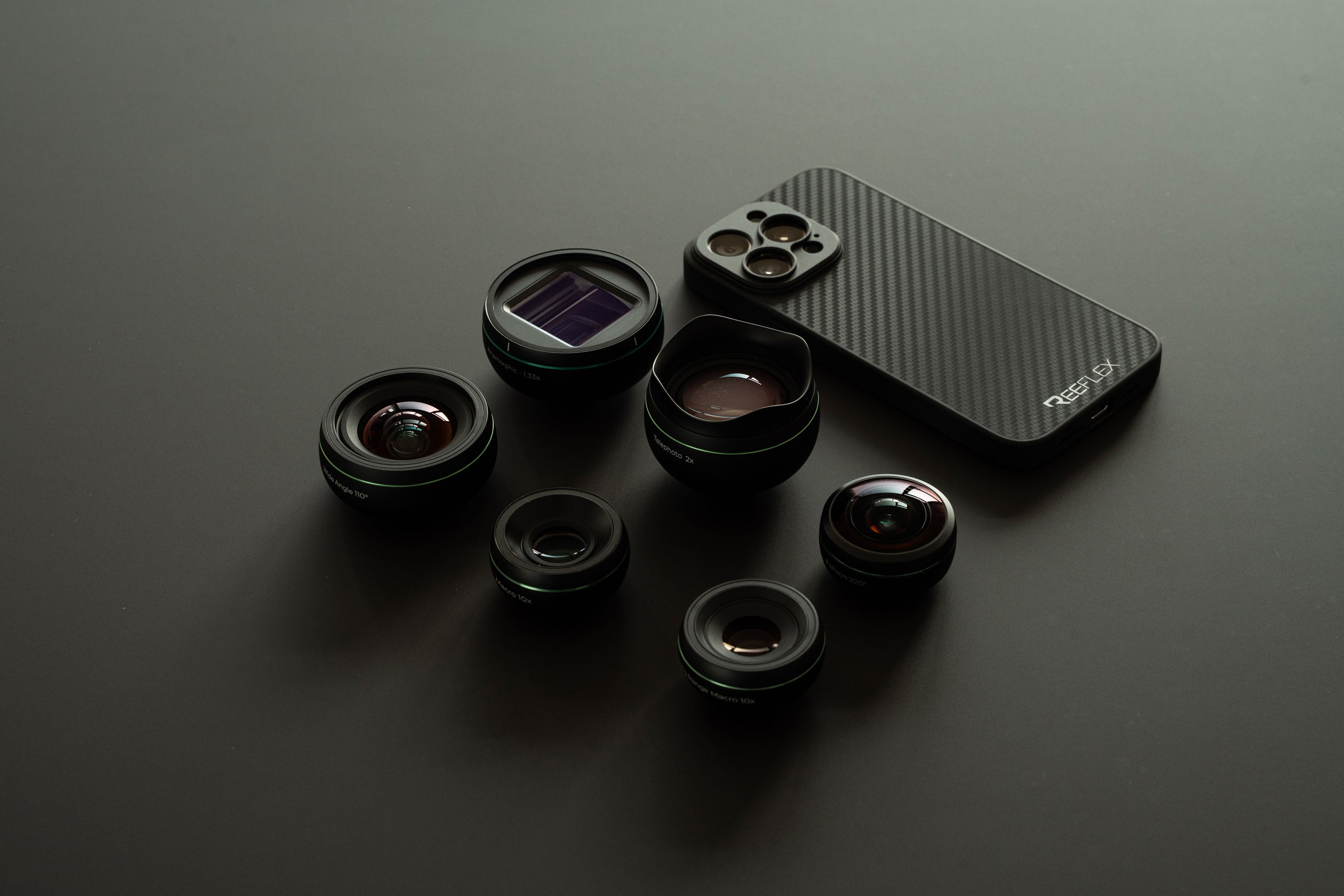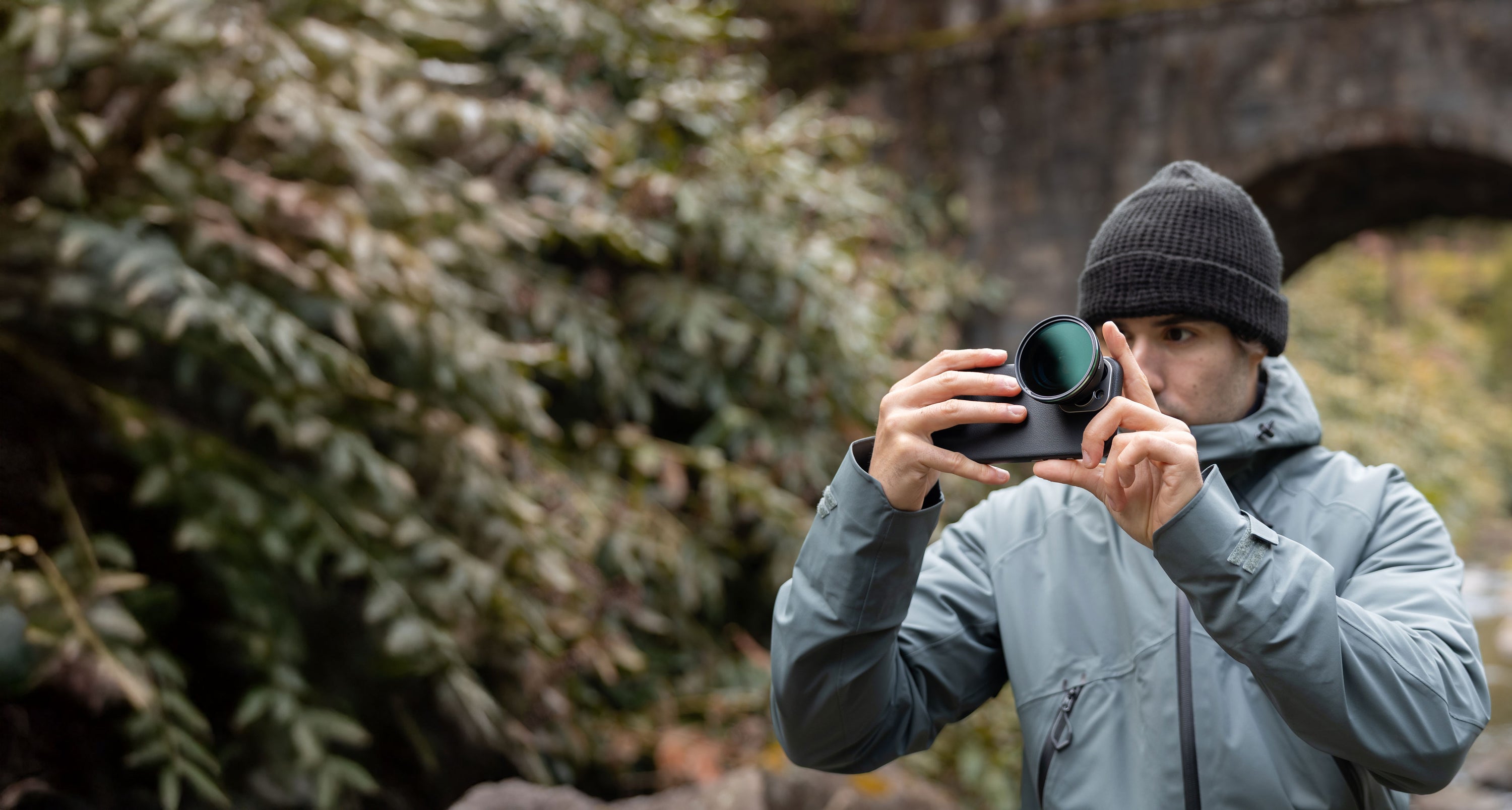FAQ
REEXPOSE VS REEFLEX PRO CAMERA VS REEHELD
ReeXpose provides full manual controls and is uniquely focused on Bayer RAW long exposure photography, producing a single full 12-bit DNG file, for broader dynamic range, unparalleled editing capabilities and best image quality. Ideal for big prints and professional long exposure photography, strictly requiring editing in post-production.
Reeflex Pro Camera provides full manual controls and two capture modes: the classic "still" photography mode in most formats (including JPG, HEIF, TIFF, ProRAW and Bayer RAW) and the Slow Shutter modes for long exposure photography in compressed formats (JPG and HEIF). Both modes utilise Apple's Smart HDR capabilities for the compressed formats, allowing you to nail the best exposure in each shot.
ReeHeld is a point-&-shoot camera app designed for capturing long exposure photos on the go, without the need for a tripod, producing photos in JPG format. ReeHeld let’s you shoot LE photos handheld, providing incredibly sharp results thanks to AI-powered smart image alignment. Thanks to Apple's Smart HDR, the photos captured are extremely well balanced and can be easily shared with your fellow photographers, right out of the app - not necessarily requiring editing.
ReeXpose is mostly suited for experienced photographers and professionals looking to set the bar higher with their long exposure photography, being able to work on Bayer RAW files (DNG), with higher dynamic range for enhanced editing capabilities, necessarily requiring post-processing after the photo is captured.
Reeflex Pro Camera has a broad scope of use for maximum versatility, offering both "still" photography (in elaborated, ProRAW and Bayer RAW formats) and long exposure photography in compressed formats (JPG, HEIFF) leveraging Apple's Smart HDR to nail any shot with best possible exposure. Reeflex is aimed to best serve a broader audience of photographers, from beginners to advanced, looking to have a complete set of tools for any situation and use case
ReeHeld is the perfect tool for capturing stunning long exposure photos on the go, designed for both amateur and professional photographers. With its easy-to-use interface and intelligent stabilisation technology, ReeHeld is particularly well-suited for amateur photographers looking to experiment with long exposure photography, or for those who want to capture breathtaking images when not carrying a tripod. Shoot long exposure, anytime, anywhere.
COMMON ISSUES
Due to a well-known internal bug of the iOS system, which is common across all third-party camera apps, one can at times experience a failure in having photos being saved when shooting in RAW and ProRAW formats.
This issue is caused by the other apps which one has running in the background, that create conflicts in terms of the available device memory, which is highly impacted when shooting in RAW and ProRAW, as those formats require an extremely intense amount of data processing when captured.
Currently the only available solution to this is to close all apps in the background to free up the device’s memory.
However we do also provide a “BACKUP function” within the app, which will allow you to save a copy of each photo in the files library and make them available in the Files app. This backup feature is already avaialble in the Settings within the "Capture Options".
To learn more, have a look at our ReeXpose Tutorial: https://reeflexstore.com/pages/reexpose-tutorial
Any issue affecting the Gyroscopic Tilt-meter is usually driven the iPhone settings you might have in use. The following steps will allow you to reset the Gyroscopic Tilt-meter and have it work as designed:
1. In the Settings, go to: Privacy > Location Services > System Services > Compass Calibration.
2. Make sure that the calibration setting is checked (active).
When shooting with Light Trails mode in very low-light conditions - using RAW format (with ReeXpose) - the user can at times experience a so-called "magenta cast" effect on the output photos, meaning the photos can have a layer of purple-ish hue/magenta color affecting the image.
This is driven by the physical/technical limitations of the iPhone’s sensor in low light and can be mitigated by manually adjusting ISO and SS within the app.
Usually, this "magenta cast" effect can be avoided by significantly under-exposing the image when shooting, so as to then be able to retrieve the details out of the image when editing in applications like Lightroom, Darkroom, etc.
Have a look at this video from Shayne Mostyn, clearly explaining how to shoot Light Trails at night or in dark environment, and avoid/mitigate Magenta Cast effects: https://www.youtube.com/watch?v=GOrebe5MUfw
When shooting in Light Trails mode (LT), it is advised to adjust the Shutter Speed (SS) and ISO - within the manual controls, on the main view - as needed, depending on the light conditions the shooter is in.
Most often, in order to achieve more linear and continuous trails of light, it is advised to go below 1/30 of SS value, or even below 1/15 and further down if needed.
This will ensure the shooter does not get the so called "morse code effect", which is when the trails of light are showing as shorter ad repeated trails, not providing the smooth and linear end result one is after.
Have a look at this video, to see how to best shoot star trails photos using ReeXpose.
COMMON QUESTIONS & HOW TO
A RAW file/image is used as the input to an editing process that results in a conventional image format such as JPG or TIFF.
In order to export your RAW images/files to a different device, such as your Mac or PC/laptop, you have different solutions.
1. Use iCloud Photos to access the original RAW files in full resolution on all of your devices.
2. To transfer the original RAW file from your iPhone to another iPhone, iPad, or your Mac, you can uus AirDrop.
3. If you edited the photo in the Photos app directly in the iPhone and then you share it, you'll share a JPG file. To share the original RAW file from the Photos app on your iPhone, tap Share, tap Duplicate, tap Edit, tap Revert, then share the photo using AirDrop.
4. To share an edited RAW photo with someone else, edit the photo in the Photos app on your iPhone, then AirDrop, email, or send with Messages. A JPG file that includes your edits is shared.
5. To email a RAW photo, create an email in the Mail app on your iPhone, then add the photo to the email. The Mail app automatically converts the RAW file to a smaller JPG file, which you can then send with email.
6. If you edit a RAW photo and want to share both the original RAW file and the edited JPG file, use Image Capture on Mac or the Windows Photos app on a PC to import the files.
7. If you’ve edited a RAW photo in the Photos app on your Mac, and you want to use your Mac to share the original RAW file only, select the photo in the Photos app, then choose File > Export > Export Unmodified Original.
Please follow these instructions to download the DNG from iCloud:
https://discussions.apple.com/thread/252707840?answerId=255108963022#255108963022
The solution is to download the file as original. The same applies if you try to import the file from your local computer. If you have a mac, here is what you do:
1. Connect your iPhone and open the Photos app.
2. Import the file
3. Select the RAW file from the imported ones.
Click "File" -> "Export" -> "Export" unmodified original. You will find the DNG in the location you chose for saving.
The remote bluetooth shutter & volume toggle functions are present but are not “perfect” yet and still under development.
For now, here is what to do to make it work:
1. Make sure that the the volume on the device, before opening the app, is not at its maximum or minimum.
2. Make a fresh start of the app. After the app is running and you put it in the background, it stops working.
We are currently working to improve this in a future release, coming very soon.
Reeflex Pro Camera and ReeXpose apps utilize Reeflex-designed algorithms to produce computational long exposure photography.
This works very differently than how long exposure photography is usually produced with a regular DSLR camera, and provide incredible results with ease and without needing ND filters. The apps in fact take multiple pictures and stacks them together for creating a long exposure photo, a process often called Frame Averaging.
In the app, the shutter speed (SS) is related to the sensor and is translatable to the shutter speed in a DSLR. While the capture duration is the total time during which the app keeps acquiring frames which are then merged together.
As an example, if you would set a SS of 1s and a capture duration of 10s, the app will acquire 10 separate photos (each acquired with 1s shutter speed) and will stack them to produce the final result.
You can see the capture duration as the number of frames that the app acquires. The longer the duration, the more frames are averaged with subsequent more “blur” in the picture.
Here, it is important to notice that in Motion Blur mode, the level of exposure is not affected by the capture duration (i.e a 2 min photo will be almost as bright as a 3 min photo). This is also why the apps can produce long exposure without ND filters.
The shutter speed controls the exposure of the single frame. Setting a slower shutter speed will result in brighter pictures, regardless of the capture duration.
Note: the shutter speed of any iPhone device is currently limited to 1 second by the manufacturer. There's no way one can go beyond that, hence the reason for the need of computational photography to obtain long exposure photography.
Currently, capturing photos in 48MP with the traditional Bayer RAW format is not supported.
ReeXpose generates DNG files using the standard Bayer RAW format (CFA, Color Filter Array).
Due to the quad-bayer sensor in the latest iPhones (starting from iPhone 14 and iPhone 15 Pro/ProMax models), only 12MP RAW files can be produced, with 4 pixels grouped into a single color in the Bayer pattern.
No- there's no way one can adjust the aperture of the iPhone's cameras, as those are fixed and cannot be changed by the user.
Note #1: the aperture value vary from camera to camera, for those iPhones that have more than just one camera available (like i.e. from iPhone X/XS above).
Note #2: the aperture is calculated from the real or physical focal length of the respective lens, not the equivalent focal lengths as listed above. While Apple does not list the actual focal length in the specs, it can be estimated from the FOV (field of view) and the sensor size to be in the single-digit millimeter range.
ReeXpose takes multiple frames and stack them together to create the long exposure photo. This process is also called Frame Averaging.
In Motion Blur mode the app makes the average of the frames (a more advanced average to save memory), while in Light Trails mode the average of the frames is done putting more emphasis on the bright pixels.
The frame rate on ReeXpose maxes out at ~20 fps, which makes ReeXpose extremely fast and efficient considering the theoretical maximum is 22-23 fps.
This means that, if the user set a SS value of 1/10 , you can expect 10 fps ca.
If brakceting is activated, the fps drop significantly since two photos at differente exposure are beingg taken simulatenously, hence everythign takes twice longer.
RAW and ProRAW photos captured on an iPhone use the industry standard digital negative (DNG) file format.
DNG is a lossless format equivalent to RAW. Originally DNG is an Adobe's proprietary image standard that was created to store image data in a generic, highly compatible format. DNG is the file used for all RAW photos on an iPhone.
You can open both type of files with the majority of the editing apps out there - like Lightroom, Darkroom, etc - which are compatible with DNG files.
You can share the original unedited RAW or ProRAW photo, which has the .DNG file extension. And if you edit the photo in the Photos app, you can also share the edited version, which has the .JPG file extension when shared.
More info on the official apple support: https://support.apple.com/en-sa/HT211965

